Chapter 1
Introduction to antenna measurement and post-processing techniques
Lars J. Foged
1Microwave Vision Italy (MVI), Pomezia, Italy
2Information Processing and Telecommunications Center, ETSI Telecomunicacin, Universidad Politcnica de Madrid, Madrid, Spain
Antenna and electromagnetic characterization have been challenging topics for more than 50 years. In the very beginning, far-field techniques for antenna characterizations of electrical parameters were introduced. In this sense, radiation pattern measurements, gain characterization, cross-polar and axial ratio measurements have been extensively studied. References [], summarized the most important techniques used in far-field characterization. These far-field techniques are still used for the characterization of most important medium-sized and large-sized antennas. The concept of far-field distance, depending on antenna dimensions and wavelength, is used for accepting a sufficient accuracy of antenna measurements.  , where D is the antenna diameter, has become the sufficient distance for characterizing the antenna electrical properties. This distance bounds the phase errors to /8 radians, and it is sufficient for the characterization of most of the antennas.
, where D is the antenna diameter, has become the sufficient distance for characterizing the antenna electrical properties. This distance bounds the phase errors to /8 radians, and it is sufficient for the characterization of most of the antennas.
However, when the frequency is increased, or antenna dimensions become larger, other techniques appeared. In 1968, Georgia Tech designed the first compact antenna test range (CATR) using large reflectors. A parabolic reflector transforms the spherical wave in a plane wave, allowing the measurement of far-field antenna parameters in a reduced distance. During the last years, the CATR systems have been improved, introducing serrated of rolled-edge reflectors to reduce the effect of the diffraction caused by the edge of the parabolic reflectors. Also, dual reflectors, using Gregorian or Cassegrain configurations, have been designed to reduce the effect of cross polarization in the antenna-measurement system design.
In 1988, Hansen summarized the spherical near-to-far-field transformation algorithms in a detailed book [].
During all these years, Antenna Measurement Techniques Association symposium has been the focal point for the main advances in the electrical characterization of antenna or radar cross section. During these years, some of the main challenges have been the reduction of uncertainties, the reduction of measurement time and the increase of the frequency for new applications.
The development of mobile communications since 1990 makes also necessary new measurement systems for user terminals and base stations. Traditional antenna measurement ranges are not the most appropriates for the measurement of these devices since the effect of the positioners, the cable interaction, the difficulty of extracting a reference antenna, among others make difficult classical measurements. Classical roll over azimuth or elevation over azimuth positioners was often replaced by gantry arc systems or multiprobe systems.
During the last years, uncertainty and errors have been extensively studied. Depending on the antenna specifications, antenna size, frequency band or type of measurement setup, different effects are more important than others. For instance, the most important effects in outdoor ranges are reflections; at mm-wave frequencies, dynamic range or phase errors due to positioning errors have to be considered; for small antennas the interaction with positioning system (including cables). Therefore, in general, near-field measurement setups are affected by other errors that do not appear in far-field ranges, and in all the cases, the effect of the measurement error on the final result cannot be immediately deduced. Classical metrology theory establishes that the quantity to be determined differs from the measured quantity, and an uncertainty analysis is required to assess the effect of measurement errors on the accuracy of the results. Most studies have been focused on this problem, trying to give a reliable estimate of the uncertainty in the far-field pattern of an antenna for a given acquisition error (in both near field or far field) or for a combination of different errors. One of the earliest studies on this topic can be found in [] to estimate the uncertainties and to evaluate planar measurement facilities, it was extended to the other two most common near-field setups (cylindrical and spherical).
The extension to the cylindrical case was presented in [] obtained on planar and cylindrical ranges was presented, reaching the conclusion that the differences between both patterns were consistent with the estimates of uncertainty for the two ranges.
Regarding uncertainties in spherical near-field (SNF) measurements, one of the initial studies was presented in [] is also based on the list of 18 errors given by Newell, adapting it for other types of measurements, such as gain measurements in SNF ranges.
All these studies were completed in the work developed in the report written in the frame of the European network Antenna Centre of Excellence []. In this study, the effects on the antenna-measured parameters of the different elements in antenna-measurement systems are studied and analysed. That document summarizes the previous existing documents, harmonizing all the contributions.
The algorithms discussed in this book do reduce uncertainty terms by post-processing antenna-measurement results, cancelling some errors that appear during measurement. The focus of the book is on how to reduce antenna errors using new algorithms and information of AUT. Therefore, the use of all these algorithms not only has the effect of uncertainty reduction, but also the reduction of systematic errors that are usually included in uncertainty budget. Most of the techniques included in this book are related with the reconstruction of the electromagnetic sources of the AUT, using different algorithms (holographic techniques or integral equation methods). Also, the electromagnetic fields can be expressed using spherical wave, cylindrical wave or plane wave expansions. In all these domains, antenna geometry can be exploded for the improvement of antenna-measurement results.
Therefore, the increase of precision in antenna-measurement systems, the development of new algorithms and the rapid evolution of the computers allow the improvement of the measurement results, reducing the uncertainty and measurement errors, using electromagnetic information, information of the AUT or combining the measurements with simulations. The use of the algorithms presented in this book allows the improvement of measurement results, reducing measurement time and mechanical specifications of the antenna-measurement system.
During the last years, some new techniques based on modal or spatial filtering have been proposed to increase the quality of the antenna-measurement results (and, in general, to improve the quality of electromagnetic measurements). In this sense, large improvements have been done in algorithms for the post-processing of the acquired data. Near-to far-field algorithms have been improved in order to be able to measure in non-uniform grids. Also, there has been a large improvement in different techniques to reduce acquisition time. Finally, there has been a rapid evolution in post-processing tools to improve the results of the measurement, reducing the effect of echoes, noise, leakage among others or extrapolating the radiation pattern to angular ranges without acquired data. Finally, last improvements in the combination of simulation and measurements allow a more accurate and faster antenna design.
All the contents included in this book have had important theoretical and practical developments during the last years. All these methods are based on the translation of the near or far-field data to other domains (as modes or currents on the antenna surfaces). In those domains, the antenna engineers can recognize and correct errors in an easiest and fastest way, having some

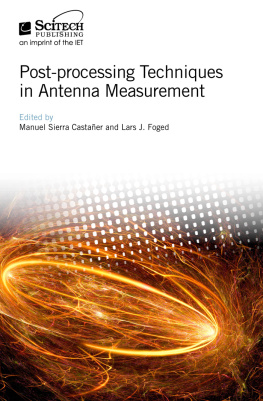


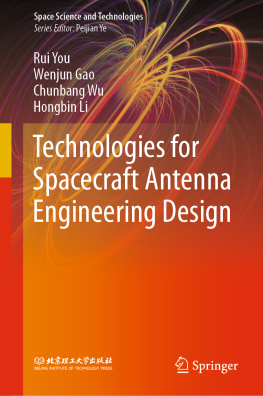
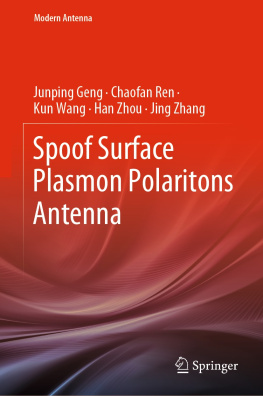
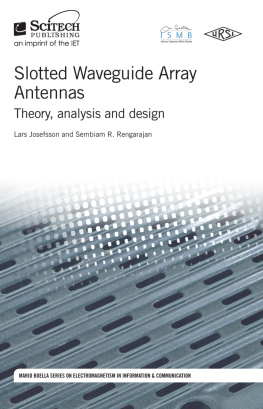
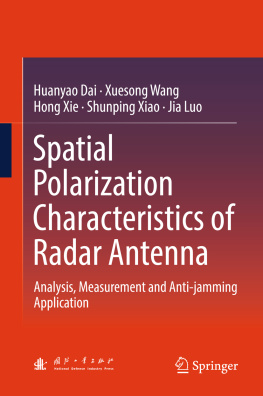

 , where D is the antenna diameter, has become the sufficient distance for characterizing the antenna electrical properties. This distance bounds the phase errors to /8 radians, and it is sufficient for the characterization of most of the antennas.
, where D is the antenna diameter, has become the sufficient distance for characterizing the antenna electrical properties. This distance bounds the phase errors to /8 radians, and it is sufficient for the characterization of most of the antennas.